#field work
Text
Some of the baby birds I met on this recent round of field work:


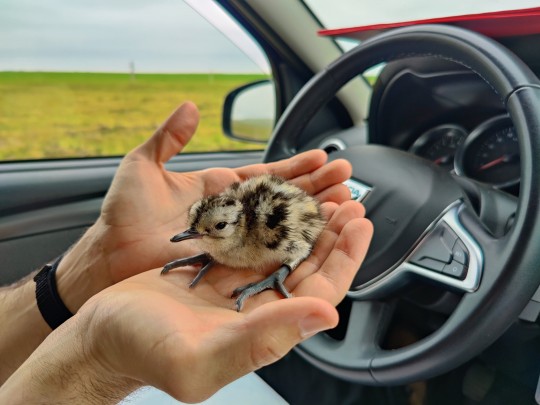

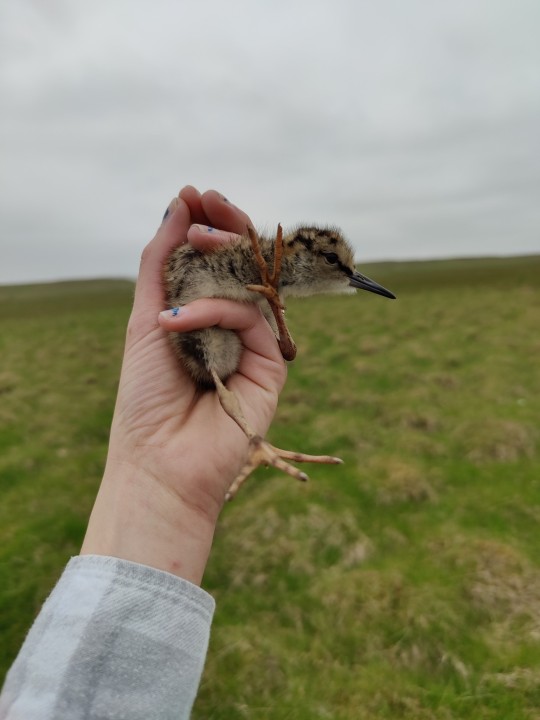

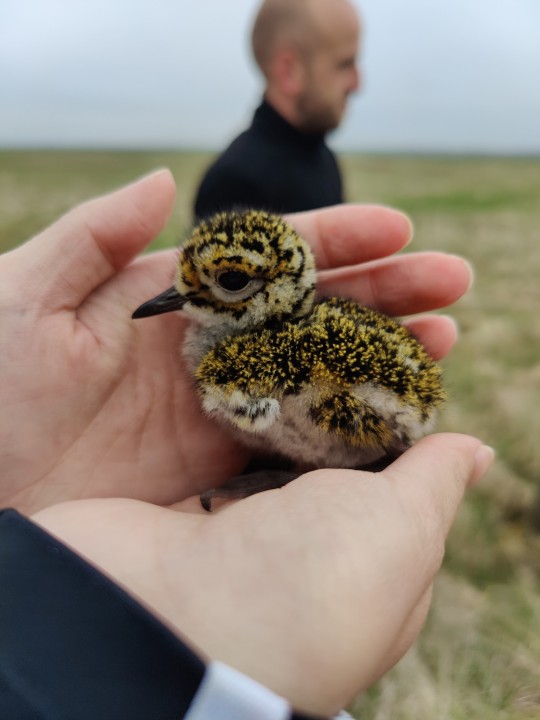
1. Limosa limosa, black-tailed godwit
2. Haematopus ostralegus, oystercatcher
3. & 4. Numenius phaeopus, Eurasian whimbrel
5. Tringa totanus, redshank
6. Charadrius hiaticula, common ringed plover
7. Pluvialis apricaria, European golden plover
#not lichens#birds#birbs#baby birds#ornithology#ecology#biology#field work#Limosa limosa#black-tailed godwit#Haematopus ostralegus#oystercatcher#Numenius phaeopus#Eurasian whimbrel#redshank#Tringa totanus#Charadrius hiaticula#common ringed plover#Pluvialis apricaria#European golden plover
4K notes
·
View notes
Text

9K notes
·
View notes
Text
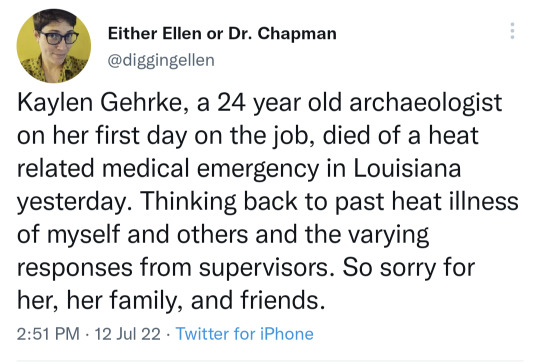
This is why fieldwork safety is of utmost importance. I've been in situations where it felt like my safety was not the primary concern, and I constantly worried about things like this happening.
OSHA guidelines are written in blood. They're there for a reason. Don't ever let someone convince you to compromise on your safety. (link to tweet) (link to news coverage)
3K notes
·
View notes
Text
There are many pros and cons of living with an ecologist.
Pros
- Could survive most reasonable wilderness scenarios and possibly save your life.
- Knows the best hiking spots.
Cons

"The Pile" which grows continuously starting 5 days before field work and may continue to exist several weeks after field work.
441 notes
·
View notes
Text
Weird things you gain from doing archaeology
Immunity to nettles
Handling a shovel both left and right handed
Bird identification
Noticing the tiniest bit of slope in a landscape.
Farmer style weather predictions. I’m out when I see low flying sparrows.
After checking a compass once, you automatically sense where north is for the rest of the week
High tolerance for rain/getting wet
You can fix anything with duct tape, zip ties and a little bit of rope. Additional pocket knife is allowed
#stereotypes#history#archaeology#indiana jones#archaeology problems#archaeology meme#geology#archaeology humor#field work#field archaeology#field archaeologist#geology meme#anthropology#physical anthropology#archaeologist#meme
692 notes
·
View notes
Text
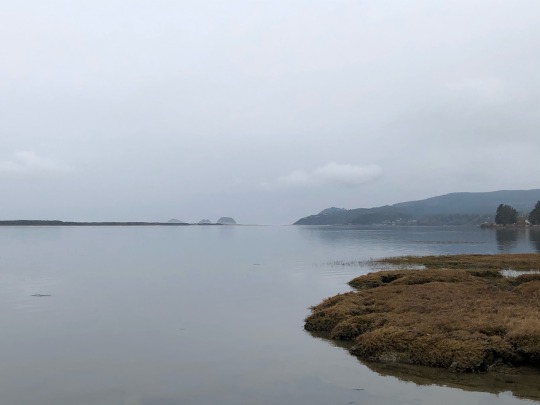
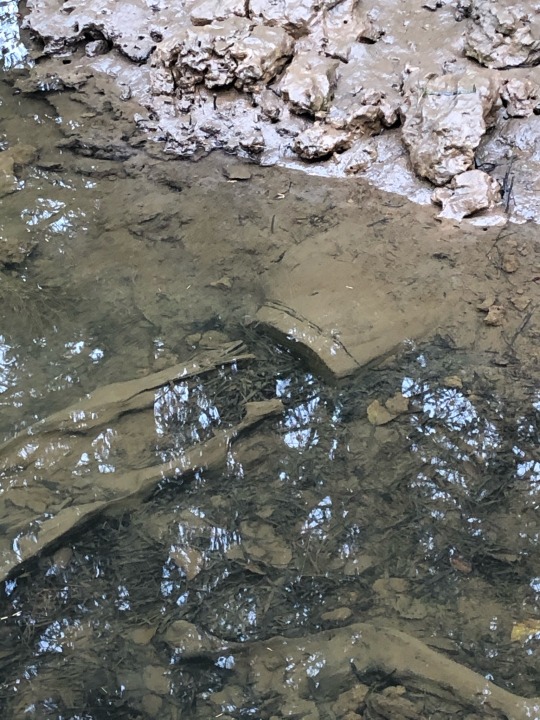

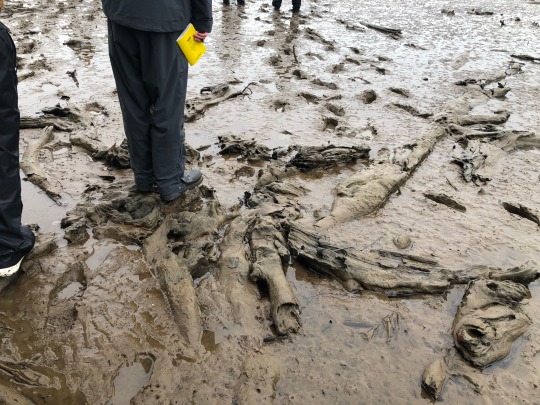
Netarts Bay is home to one of the finest estuaries in Oregon; a rich ecosystem of oysterbeds and coastal marshes. However, it conceals evidence of the last great earthquake in the Northwest. 320 years ago, on January 26, 1700, the Cascadia Subduction Zone ruptured along its full length, sending a colossal tsunami onto the Oregon Coast and across the Pacific to Japan. The tsunami is recorded in Oregon as a layer of sand amidst mudflat deposits. Here, 7 tsunami layers are recorded, showing earthquakes back over 2,000 years.
Also, a ghost forest is present. Stumps of ash and fir trees are preserved under water and in the mud that have been carbon dated to around 1000AD. These trees were killed by a tsunami event which saturated them in salt water. The earthquakes cause the coast to subside by about 1 meter, into the water, and the slow tectonic action between earthquakes slowly raises it back above the water.
I've been back a number of times since these pictures were taken, and when the data is all published I'll talk more freely about it.
#oregon geology#cascadia#geology#marine geology#ghost forest#netarts#oregon coast#paleoseismology#field work
90 notes
·
View notes
Text

Today's view from Archiepiscopal Residence of Zagreb whose wall paintings, harmed by the earthquake, I had the opportunity to restore.
#art#dark academia#art history#historical art#dark academism#books and literature#europe#history#romantic academia#chaotic academia#chaotic academic aesthetic#academic disciplines#academic research#university#student#study#explore#adventure#field work#field trips#students#assignment#education#church#crypts#hidden secrets#harry potter#study aesthetic#conservation#restoration
503 notes
·
View notes
Text
Do You Have a Dream?
A dream that involves going out into the wilds of the western U.S. to learn how to be just like me? You are in luck! Here's your chance to learn how to be a REAL FIELD PALEONTOLOGIST!!!!

As one of the instructors for the field program at Colorado Northwestern Community College, I am pleased to announce our 2024 field schedule! Mark your calendars because this is gonna be the best summer of your lives!
We will be holding two sessions:
Session 1: July 6th-20th
Session 2: July 22-August 5th
Come learn how to identify dinosaur fossils, learn about the geology of northwestern Colorado, learn the basics for taphonomy, paleo field techniques like quarry mapping, trenching, making plaster jackets, prospecting, and finally, safely removing fossils to take back to the museum.
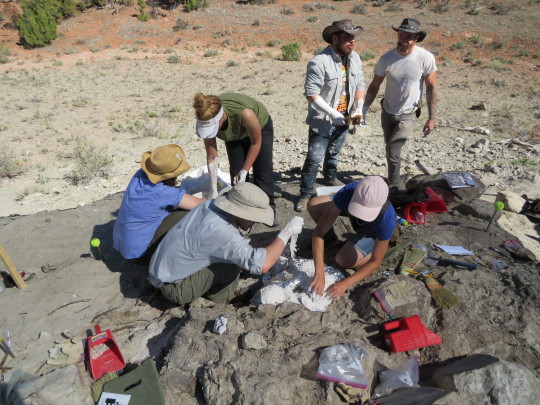
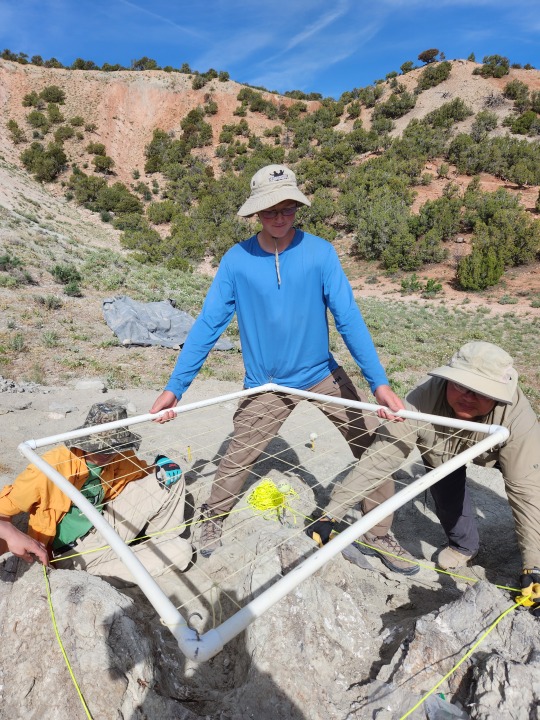
Field work and the great outdoors maybe not your thing? That's okay! We also offer a Paleontology Lab Techniques course on campus where you can learn how to clean up the bones brought back from the field, learn how to make cast replicas of specimens and maybe even build a museum display!
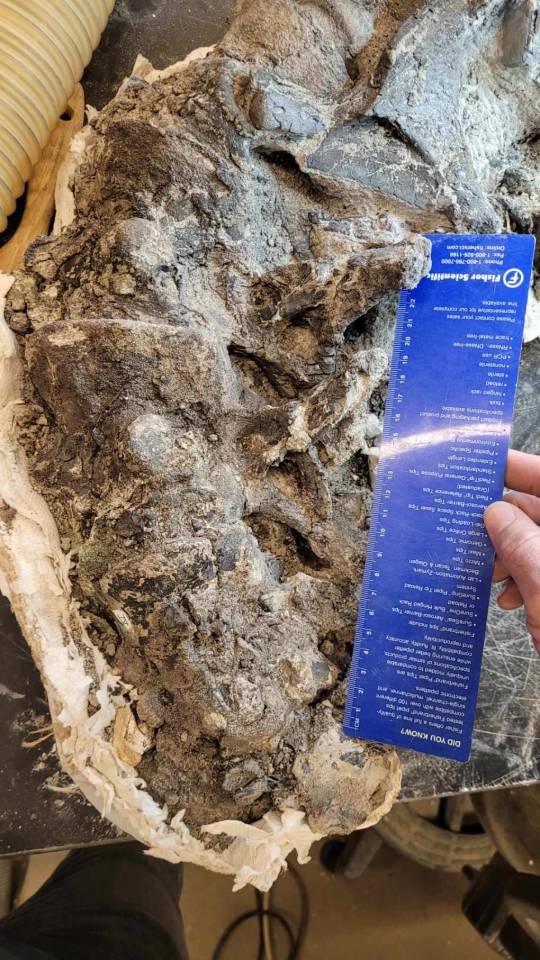
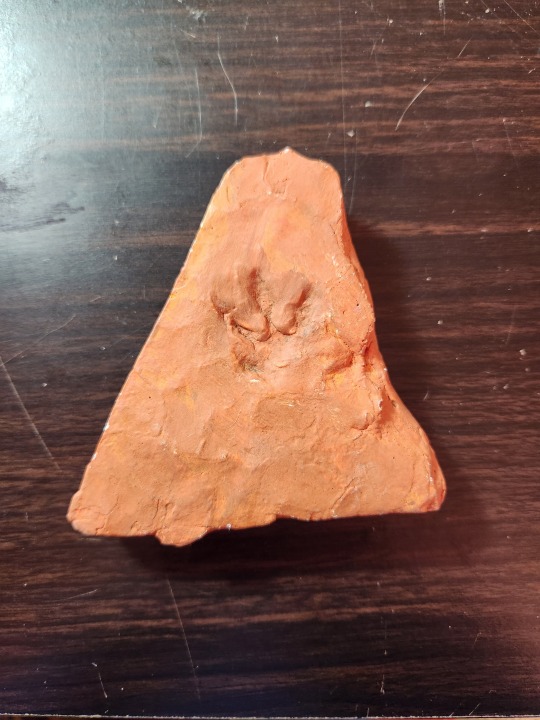
Maybe you want to do the whole kit and caboodle! That's even better! Since both sessions are back to back you can come do field work with me the first session and then learn the lab side of things the second semester! How COOL is that?!?!
Interested in learning more? Feel free to ask me or check out cncc.edu/paleontology
There are also grant/scholarship opportunities through the Society of Vertebrate Paleontology to help cover costs if that is a setback. Please check the school website for more info. There is a link to the SVP page so you can check out those options. Hope to see you guys this summer!

(Look at this huge wave I am measuring with my body while we were prospecting!)
36 notes
·
View notes
Video
Shades of Blue by Isaac Borrego
Via Flickr:
Desert View, Grand Canyon National Park, Arizona United States of America
#Desert View#Grand Canyon National Park#Arizona#grand canyon#national park#canyon#desert#united states#america#usa#national parks#national park system#nps#find your park#department of interior#public lands#geology#field work#geosciences#layers#layering#national park service#flickr
26 notes
·
View notes
Text
Happy Pride to the other queer biologists spending the whole month isolated in the field!
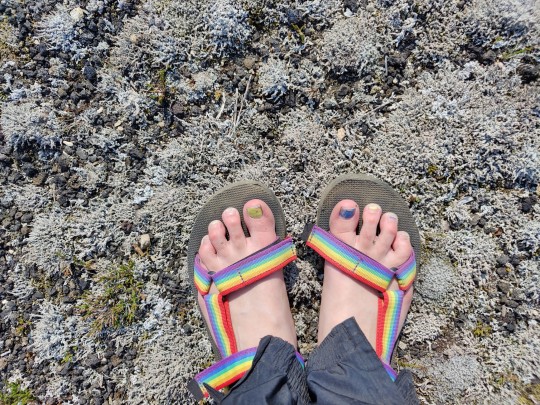
Rainbow Tevas + a bed of Sterocaulon lichen basically sums up my entire existence right now.
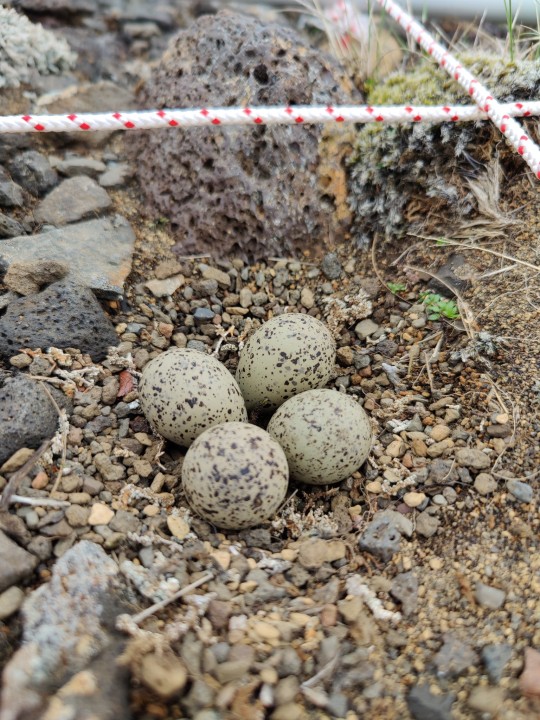
Also this nest appeared to have 3 adults watching it! We caught 2 males on the nest. Love wins.
(tbh this species has very little sexual dimorphism so one of them could have just been a butchy-female which I still think makes them queer)
#Pride#queer#nature is queer#lichen#lichens#lichenology#ornithology#also my whole project is the intersection of 2 different sciences that normally don't go together#the machinations of a queer mind in the world of science#ecology#biology#field work
342 notes
·
View notes
Text
Thought y’all should know the historic preservation department at my college has a mascot and it’s trowel with a mustache holing a smaller trowel. His name is Trowely.
#if you even care#they’re buying stickers to sell and oh my FOD#clair rambles#college#history#historic preservation#archeology#field work#academia#academia aesthetic#Rachel weisz in The Mummy fall
178 notes
·
View notes
Note
Hi, I'm going to be doing a dig school in Italy in a few months, and I've been trying to find a good pair of steel-toed boots. I'm transmasc, and my feet are really small (6.5), so I can't really wear men's shoes, and it's really hard finding quality women's work boots, ESPECIALLY with a steel toe. Do you have any recs?
My own boots are Timberlands, which are basically the same in women's as they are in men's, but they don't have steel toes. Is this a requirement for your field school, or can you get other boots? I know plenty of working archaeologists who don't wear steel toes.
But there is also absolutely a market for women's steel toed boots out there. If any of my followers want to chime in with their own boot recommendations, please do!
@archaeo-geek and @archaeologysucks as two working professionals I wonder if you have any advice?
-Reid
71 notes
·
View notes
Text
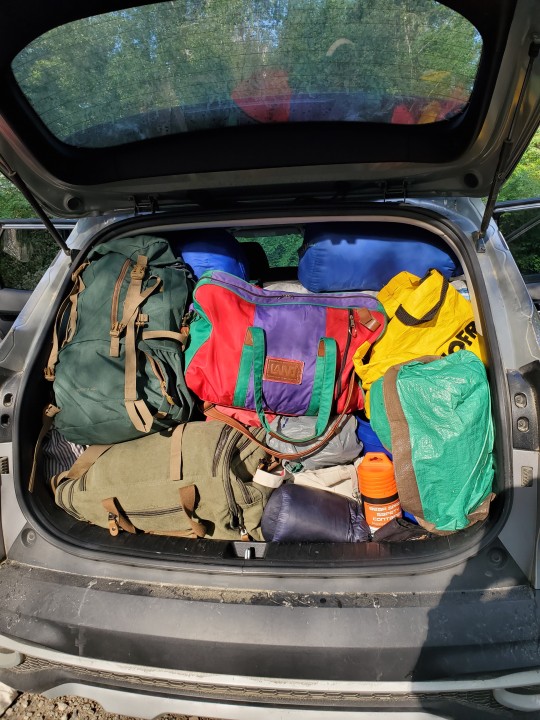
Field work Jenga. We for another sleeping bag in there too.
145 notes
·
View notes
Text
So as an archaeologist you never really get to keep the things you find. Until today…
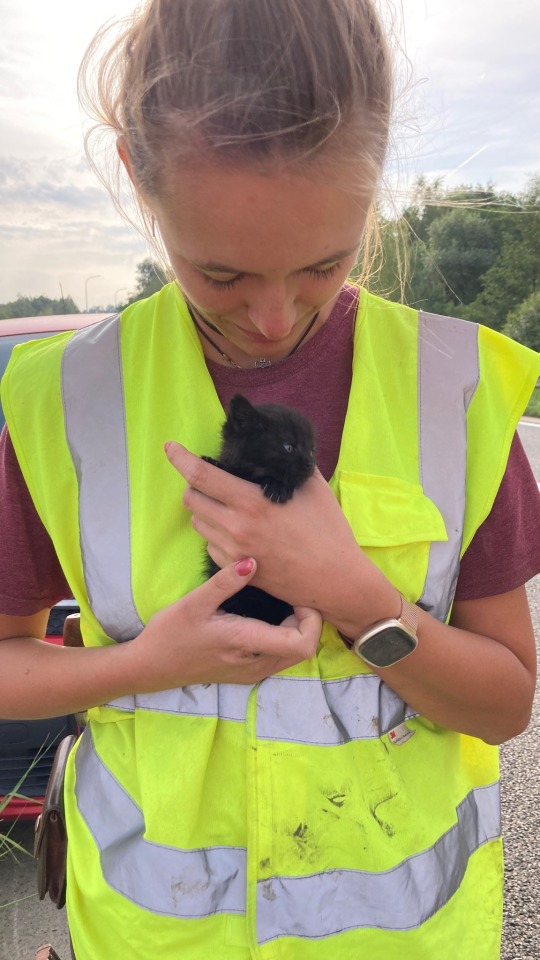
This 3 week old little ball of fluff is coming home with me.
Don’t abandon animals because they visually displease you. Just don’t dump animals in general. Black cats rule
1 week update:
#black cats#the void#cats on tumblr#tumblr cats#abandoned#animals#abandoned animal#rescue#archaeologist#field archaeology#field work#archaeology meme#archaeology problems
1K notes
·
View notes
Text
Madagascar, Lemurs, OneHealth.......a Masters? 🏝️🐒🔭🎓(U9)
Hey friends, its been a while and I’m glad you’re here!
This weeks’ prompt encourages us to share something about nature that gets us excited and ooooooooooooooooh am I excited! Like I’ve mentioned before, I’m a 4th year zoology student which 1) means I know a lot of cool animal stuff (ask me questions!), and 2) it’s almost time for me to graduate!
So today I’d like to talk about my current Masters application and the really cool OneHealth conservation research I have done (and hope to do again) in Madagascar!

Over the summer I got the opportunity to take the One Health Approach to Conservation Field school where we were taught zoological, ecological, and anthropological approaches to conservation issues in Madagascar’s rainforest and unique dry deciduous forest within Ankarafantsika National Park (Picture a rainforest but take away the rain, the biggest animal is the same kind of lemur as Zoboomafoo, and also the soil is like sand!!). While I won’t go into too much detail about most of the field work we practiced, like tree identification, phrenology, and size measurements, participant-observation sessions in tree-planting, rice harvesting, and a local village classroom, and of course-tent living and consistent rice and beans eating, I willllllllllll go into detail about the lemurs, cause oh so much do I love those little guys.
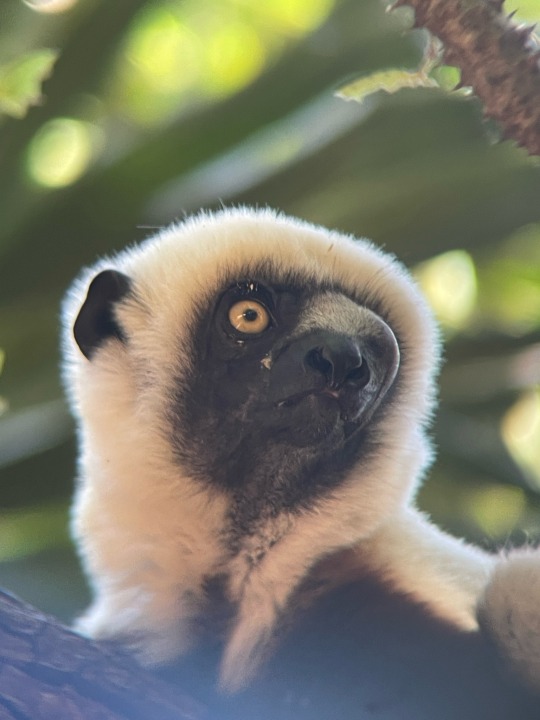



(1. Male with eye tumor/injury, 2. me with two mothers (if you look close you can see 2 baby heads!), 3. me taking leaf samples to make a dry-season Tree ID sketch, 4. my luxurious living quarters for the month.)
Our instructions were to do both focal and scan sampling, but my absolute favourite part of the trip was following the lemur groups and trying to identify the specific individuals while they were either chilling in our camp or being extremely chaotic in the forest.
During these observations, not once but twice did I witness 2 separate groups have lemurs literally try to kill an individual from the other group... and so when asking about this to my professor, the general conclusion we came to after he told me he’s never seen such violence despite coming to the park for years, was that the increased forest fragmentation (deforestation making the forest into sections rather than one continuous space) might be forcing groups that should be far apart into sharing the same spaces, causing fights for space, food, etc.
This species of lemur (Coquerel’s sifaka) is critically endangered and is a huge sense of pride for the indigenous people of Madagascar. Many of the parks residents follow taboos that forbid lemur hunting and consumption to protect these creatures. Unfortunately, its possible that either the past or current farming practices of some of them are negatively affecting lemurs, potentially without realizing. Not only does this become an anthropological issue, but if true, is a logistical problem best answered with knowledge of the lemurs behaviour, spatial and abundance knowledge on the plants used for food and shelter by both lemurs and people, and of course interviewing, participating in, and potentially educating and being educated by the residents to get a proper understanding of how to tackle this problem.
And so that’s the general gist of what I’ll be diving deeper into for my Masters, wish me luck!
[My friends video of one of the violent interactions (I know it looks like they are hugging but they have giant teeth with a strong bite force, are the size of toddlers, and it didn't give up until it thought the other was practically dead), the lemur that didn't run away was left with a bleeding head and injured arm but we think she survived!]
#Madagascar#Ankarafantsika National Park#OneHealth#Zoology#Ecology#Anthropology#Sifaka#Coquerels sifaka#lemurs#field work#conservation#envs 3000#science communication#behaviour research
11 notes
·
View notes
Text
Transcript Episode 82: Frogs, pears, and more staples from linguistics example sentences
This is a transcript for Lingthusiasm episode ‘Frogs, pears, and more staples from linguistics example sentences’. It’s been lightly edited for readability. Listen to the episode here or wherever you get your podcasts. Links to studies mentioned and further reading can be found on the episode show notes page.
[Music]
Gretchen: Welcome to Lingthusiasm, a podcast that’s enthusiastic about linguistics! I’m Gretchen McCulloch.
Lauren: I’m Lauren Gawne. Today, we’re getting enthusiastic about when linguists keep using the same example texts over and over again. But first, have you ever wished that Lingthusiasm could be a little, um, less enthusiastic?
Gretchen: Most of the time, no, but we’ve heard some complaints. Actually, we heard one person once said to us that they tried to listen to Lingthusiasm to fall asleep, and they couldn’t do it because we were too high energy and enthusiastic. Many years later, we have now taken on board this comment and also, just for fun, we have made a [ASMR voice] slowed down, soothing [regular voice] version of Lingthusiasm where we read a bunch of linguistic sample sentences, some of which we mention in this episode, [ASMR voice] in much longer and more relaxed form.
Lauren: [ASMR voice] Get many soothing sentences of linguistics nonsense read to you.
Gretchen: [ASMR voice] By joining us on Patreon at patreon.com/lingthusiasm. [Regular voice] Plus, of course, get access to a bunch of other bonus episodes at the usual speed and volume also on Patreon and help us keep the show running.
Lauren: If you’re interested in why we chose the sentences that we read in the bonus, we’ll be talking about that this episode, so keep listening.
[Music]
Gretchen: Lauren, can I tell you a story?
Lauren: Yes, please.
Gretchen: This story is about the north wind and the sun.
Lauren: Hm.
Gretchen: “The North Wind and the Sun were disputing which was the stronger when a traveller came along wrapped in a warm cloak. They agreed that the one who first succeeded in making the traveller take his cloak off should be considered stronger than the other. Then the North Wind blew as hard as he could, but the more he blew, the more closely did the traveller fold his cloak around him. At last, the North Wind gave up the attempt. Then the Sun shone out warmly, and immediately the traveller took off his cloak. And so, the North Wind was obliged to confess that the Sun was the stronger of the two. The end.”
Lauren: A classic Aesop’s Fable. In fact, literally one of Aesop’s Fables there. But I know it specifically as the example text that people record to illustrate the sounds in a given language.
Gretchen: Yeah. I think I actually had an illustrated children’s picture book of this when I was a child.
Lauren: Because of your interest in phonetics across the world’s languages?
Gretchen: Yes, that is definitely why my parents bought me this as a five-year-old. No, I think they just liked the moral, “You can do more with persuasion than you can with force,” which was the last sentence in the illustrated Aesop’s Fable version that I had as a child. But imagine my surprise when, many years later in linguistic school, I encountered this story as a classic example text.
Lauren: This text gets translated into many different languages, and it’s read as the example passage of what it sounds like to tell a story in a language as part of a series called “Illustrations of the International Phonetic Alphabet.”
Gretchen: The Journal of the International Phonetic Association – this is the one, I think, where all of the articles used to actually be written in phonetic transcription rather than in standard orthography, which is fantastic.
Lauren: Now they’ve moved to standard orthography, but what is also fantastic is all these articles that illustrate the way that different languages sound. You can download and listen to the recordings that are made as part of those journal articles, including recordings of a narrative passage, which is usually “The North Wind and the Sun.”
Gretchen: I guess it’s a relatively classic passage. It does involve personifying the elements, but many cultures do allow you to personify the elements. I think some other passages that sometimes get used as comparative linguistic passages are particular stories from the Bible because the Bible has been translated in a bunch of languages. But this is not great because people often use a stylised, formal style of language for Biblical texts that really doesn’t reflect how people talk in everyday life. Much as Aesop’s Fables are a bit culturally specific, the Bible is also very culturally specific.
Lauren: I do also appreciate when they were recording examples of New Zealand English, they did translate it to “The Southerly Wind and the Sun” to make it more geographically appropriate.
Gretchen: Oh, excellent. Yes. They do change out the words sometimes whether you have “the Sun shone” or “the Sun shined,” sort of depends on variation. Sometimes, they have this exact text being read aloud, and sometimes they let people retell it in their own words. Of course, if you’re translating it into lots of different languages, you can localise that translation however you want.
Lauren: You told me a story. I think it’s only fair that I tell you a story.
Gretchen: Oh, yes, please.
Lauren: Are you ready?
Gretchen: Yes.
Lauren: Okay. “Please call Stella. Ask her to bring these things with her from the stone: six spoons of fresh snow peas, five thick slabs of blue cheese, and maybe a snack for her brother Bob. We also need a small plastic snake and a big toy frog for the kids. She can scoop these things into three red bags, and we will go meet her Wednesday at the train station.”
Gretchen: This is a bit of a different style of story to me than the Aesop’s Fable style. “Small plastic snake” – I don’t think this one was found in Ancient Greece.
Lauren: And perhaps less of a direct moral to this one.
Gretchen: It also is a little bit directive, like, “Oh, it’s my job to call Stella. All right.” This story comes from the speech accent archive, which is a website that has many hundreds, probably a thousand – I wasn’t able to get a precise count of speech samples – of people speaking English who have both a variety of accents of English and also who’s first language is something else, and a variety of non-native accents in English, all reading this same English paragraph, so that if you want to know what Ugandan English sounds like, you can listen to some audio clips of some people from Uganda reading this passage, and you can be like, “All right, here’s what it sounds like.”
Lauren: Everyone’s reading the same thing. We have a nice clear benchmark. It has lots of different sounds, lots of S-y sounds I noticed as I was trying to read this out to you.
Gretchen: It’s got “slabs” and “snake” and “snack” and “store” and “spoons,” so a lot of these S-plus-consonant-clusters and several – “these things into three” – /ð/ /θ/ /θ/. You get a bunch of different sounds and sound sequences. The note on the speech accent archive website says, “This paragraph contains practically all the sounds of English,” which I think is because, depending on your variety of English, exactly which sounds are in it and not can vary, but they’ve made an effort to get at least most of them.
Lauren: The fact that they’ve made this effort to get all the sounds means that perhaps the meaning of the story becomes less important I think it’s fair to say.
Gretchen: It’s a little silly.
Lauren: It gets a little bit silly trying to make something that sounds sufficiently coherent, but you’re really focused on the individual sounds.
Gretchen: “Six spoons of fresh snow peas” – I dunno that I really measure snow peas in spoons, but people can read somewhat nonsensical text, and that’s also okay. This is very English-centric. There’s not an effort to translate this story into other languages because it’s focused around trying to get a specific range of sounds in English.
Lauren: I just know this as “The Stella Passage.”
Gretchen: I would call this one “Please Call Stella.” I think that’s just what I would refer to it as. There’s also some passages – so there’s a longer passage that’s about rainbows, known as “The Rainbow Passage.”
Lauren: “The Rainbow Passage.”
Gretchen: Which I will not read in full because it’s a whole page, but it begins, “When the sunlight strikes raindrops in the air, they act as a prism and form a rainbow. The rainbow is a division of white light into many beautiful colours.”
Lauren: Aww.
Gretchen: Yeah, it’s kinda sweet. “The Rainbow Passage” and another passage called “The Grandfather Passage” are familiar to me from linguistics and came up recently because a friend mentioned that they’re used in people who are doing gender voice training. If you’re trans, you want your voice to be perceived as a different gender, something that some people do is adjust the way they produce certain vowels and consonants so that they sound more characteristic of a particular gender. People often practice on particular reading passages, which are part of speech training. You can record yourself and keep an idea of what your progress is over time. This “Rainbow Passage” and “The Grandfather Passage,” which is another one that’s about your grandfather – this very old school guy who wears a frock coat.
Lauren: He’s eccentric but sound of mind if I recall.
Gretchen: Yes. I think this is a very old school grandfather. I don’t think anyone’s current grandfather wears a frock coat these days unless they’re a historical reenactor or something. But these are some passages that sometimes get used in speech training. There’s a really interesting interview on the Gender Reveal podcast with Renée Yoxon who does trans voice coaching if anyone wants to know more about how that goes.
Lauren: It’s really fascinating the lives that these example texts live as they continue on in the world. Another set of example sentences are the Harvard Sentences, which are around 700+ sentences that are used mostly used in training speech-text synthesis programmes or testing telecommunications systems.
Gretchen: The Harvard Sentences, there’s 720 of them – about 10-word sentences – so there’s tons of them. They’re also designed for their phonetic value. They’re designed to contain English sounds in a range of different contexts. For example, in English, we say the /k/ sound in “keen” slightly differently from how we say the /k/ sound in “cool” or in “stick.” You need to have words that contain it at the beginning of the word, at the end of the word, before several different vowels, so that when you’re trying to put it into words, it sounds a little bit less robotic.
Lauren: This is why they also get their other name, which is the “Harvard Balanced Sentences,” because they have a balance of the most commonly occurring English speech sounds in a balanced range of contexts.
Gretchen: Right. We thought maybe this would make them a little bit extra soothing. Also, there’s 700 of these, so we can’t read them all to you in this episode because that would get a little bit boring and tedious, and you might go to sleep.
Lauren: In fact, that is a perfect application for recording all 720 of them as a soothing ASMR experience.
Gretchen: Wait, can we call this “Lingthusiasmr”?
Lauren: I think we can.
Gretchen: “ASMR,” if you haven’t encountered it, is the “autonomous sensory meridian response,” which is the relaxed chills feeling that people feel down their spine when you listen to certain kinds of slow and relaxing sounds. I’m not entirely sure that our episode will induce ASMR. We’ll have to test that empirically. But I do think it sounds very soothing and will probably help you sleep. Please let us know if it works if you think this is fun.
Lauren: I have to say, from the experience of recording them, they are such boring nonsense that they become kind of surreal.
Gretchen: I really felt like I was zoning out as I was reading them. We read them 10 at a time and took turns, and by the end of the 10 list, I would be sort of like, “Oh, I’m very slow. My heartrate has gone down. I’m relaxed.” I think it’s important to recognise that when people are reading example sentences, that is work, and it takes concentrate to try to read exactly the words on the page in a consistent tone of voice and not stumble over words. We definitely had to re-record some bits and edit them back together to make them sound smooth.
Lauren: Having recorded other people for phonetics experiments, this just once again reminded me of how much respect I have for people and their patience and their willingness to participate in recording sentences like this for analysis.
Gretchen: Thank you to our patrons for letting us do not only the podcast in general but also occasionally fun, weird experiments like this. Let us know if it actually helps you sleep or if this is fun or we should never do it again. All of these are options. Did you notice anything else about the content of the sentences as you were reading all 700, Lauren?
Lauren: I did. We – I have to say – did skip a few sentences because they did not produce the chill, relaxed vibes we were going for, especially the ones about forest fires and cutting off people’s heads.
Gretchen: Yeah, some of the sentences were a bit violent. We thought, you know, if you’re trying to fall asleep, and then you hear “The prince ordered the person’s head to be cut off,” you’re like, “I don’t know if I wanna hear that.” Even though it’s a fairytale setting, it’s still not very cheerful. We didn’t record all 720. We thought we would sacrifice balanced, scientific accuracy for being-able-to-fall-asleep-itude. I noticed that sentences that we kept, which was most of them, had this agricultural vibe.
Lauren: Which is pretty funny given that these are from the 1950s and ’60s.
Gretchen: They’re from the ’60s. They had cars in the 1960s, and yet, there’s one car in all of these sentences, and there’s a lot of horses.
Lauren: There are a lot of horses, indeed.
Gretchen: And wagons and carts. There’s one bus and one train and one car, and there’s all these horses and wagons. It’s just sort of pastoral.
Lauren: I also appreciate the person who wrote them who put all of the examples with “fudge” in there, but that might be just because I was hungry while we were recording.
Gretchen: Delicious. We did consider briefly trying to come up with replacement sentences that would still be phonetically balanced, but it’s a lot of work to come up with sentences that contain certain sounds in particular combinations and also make enough sense that you can read them even if some of them are a little bit silly.
Lauren: In fact, a lot of phonetic elicitation is done by just getting people to say a particular single word, maybe inside a sentence, so that you get it in a more natural environment rather than just listing individual words where you get this [list intonation voice] LIST intoNATION as people READ through the LIST.
Gretchen: If you want people to say, for example, a bunch of colours, you shouldn’t just have them say, “Red, orange, yellow, green.” You could instead do, “I saw the red thing,” “I saw the blue thing,” “I saw the green thing.” And then you can cut out the “red” and “blue” and “green” from the middle of “I saw the whatever thing,” so that it’s in the middle like that. Is that right?
Lauren: Yeah. Sometimes, in phonetics we’re so interested in just the sounds themselves. We don’t even care if the words make sense let alone the sentences. People will come up with nonsense words that they can record to get particular sounds.
Gretchen: I have a fun story about that from when I was an undergrad where we had to come up with a bunch of nonsense words for stimuli, only one of the words that we came up with – I forget what it was. I think all of our words were like consonant-vowel-consonant, so it was something that was like a slang swear word or a word related to some sort of risqué topic, and the prof was like, “Oh, we can use this word, right?” And all the students sort of look at each other and start giggling. We’re like, “Who’s gonna tell him?”
Lauren: Okay, excellent public service announcement. If you are creating nonsense words for a phonetic study, maybe run them by a couple of your students first just to check.
Gretchen: Run them by somebody who has a bit of a dirty mind. Look them up on Urban Dictionary. Ask a few people if you’re not working on a language where you have something like Urban Dictionary just to make sure that they’re not actually a word that’s gonna have your participants giggling.
Lauren: So far, we’ve been discussing sentences and texts for studying the sounds of language, but there’re also some commonly reoccurring texts that people use when they’re looking at sentences or even larger units of language to study.
Gretchen: One of the these is what I know as “The Frog Story,” which is a wordless picture book that has a little boy and a frog in a jar, and the frog escapes, and the boy and the dog have to go after the frog, and then they find the frog on a log. It’s very charming, and there’s no words there, so people just have to look through it once, and then you go through it again and retell that story based on the pictures.
Lauren: I have a copy of this book, and there are five or six in the series. They’re super charming. But every time I pull it off my shelf, I get mildly surprised that it’s not called “Frog Story,” it’s called, “Frog, Where Are You?”
Gretchen: Oh, I always forget this because in linguistics people just call it “The Frog Story.”
Lauren: It’s by Mercer Mayer from 1969.
Gretchen: You can tell when you’re in someone’s talk, and they’re saying, “The boy looked for the frog behind the tree,” and you’re like, “I know how you elicited this sentence.” But the nice thing about it not having written words is that you can use it with children, you can use it with speakers of a bunch of different languages. It does have some relatively culturally-specific concepts like, you know, do you recognise pictures as telling a story in a particular order? Is this cartoon drawing of a frog legible to you as a frog? But it is at least more culturally abstract than just having people directly translate a particular type of story word-by-word.
Lauren: I appreciate it because it leads to some really charming example sentences when people are discussing, say, how the structure of sentences works or maybe how people put together a story in a particular culture.
Gretchen: It’s got that sort of, you know, the frog runs away, and then the frog is found, and it follows that narrative arc of losing something and the finding it, which is I think relatively straightforward to tell in a bunch of languages.
Lauren: A book is very easy to take with you regardless of where you’re doing your analysis. You don’t need to have electricity or anything compared to another really common thing that’s used to get people to tell stories, which is a short video called “The Pear Story.”
Gretchen: “The Pear Story” is so charming. It’s this six-minute film that was produced at the University of California at Berkeley in 1975. It has no language in it. There’s sound effects, but no one says anything. You have this story that they showed to a bunch of speakers of languages who are asked to then retell the story from the images.
Lauren: You can tell it’s from 1975 because people have amazing pants and hair from the era.
Gretchen: Oh, yeah, there is for sure some flair in those pants. The story is, roughly, having just watched it – this is on YouTube if you want to watch it for yourself – but there’s a man who’s a farmer, I guess, who’s got a kerchief around his neck. He’s climbing a ladder up a tree, picking some pears, and putting them in a basket. He picks a whole basket full of pears and sets it down with the other basket of pears below the tree, and he goes back up the ladder. Then some guy comes by with a goat for no apparent reason.
Lauren: [Laughs] Yes.
Gretchen: As you do. Then a little boy comes by on a bicycle and picks up one of the big baskets of pears and puts it on the front handlebars of the bike and drives off with it. Bum bum bum.
Lauren: Right.
Gretchen: Then the kid on the bike runs into another group of three kids. One of them has a little paddle thing that has an elastic thing with a ball on the end.
Lauren: And they’re bouncing the paddleball thingamajig.
Gretchen: Yeah, that thing. And the kid on the bike runs into a rock and falls off the bike, and the pears fall all over the place. The kid’s okay. But the other kids help him put the pears back in the basket. And he goes off on the bike again except he’s – oh, he’s lost his hat, and the kids give his hat back as well. Then Bike Kid goes off into the sunset, and the other kids go off, and they’ve secretly each got a pear in their pocket that they took as thank you for helping with the basket. Then the farmer comes back down the tree and is like, “Oh my god! Where did my pears go? Where did the whole basket go?” And the three kids who were helping were like, “Oh, I dunno.” That’s the end of the story.
Lauren: One thing your retelling reminds me of is that this is actually really nicely shot. It’s clear that it’s in California, right. It feels like they actually got some film people to shoot a really, really nice film.
Gretchen: Right. And I think they got actors to be the characters because the characters look like they’re the wrong age for grad students.
Lauren: Which is often what happens when people are shooting an elicitation video on no budget.
Gretchen: Right. Like, it’s not just you and five of your friends from grad school. Because the kids are too young to be grad students, and the farmer looks middle aged. There are some middle-aged grad students, but it’s less like, “Okay, you got a bunch of people in their 20s to do this – 20s and 30s to do this.” It’s beautifully shot. It’s got nice lighting and all of this stuff. They got a goat. I dunno where they got the goat.
Lauren: Well, the goat reminds me, but when they put this pear story together – and it is literally called “The Pear Story,” unlike “Frog Story” which has a secret other name – when they put this together, they deliberately had these things they were trying to see whether they would come up or how people would do them in narratives across language. The goat being there that has nothing to do with the story is whether people pay attention to background information. The fact that we start off – you said “a farmer” at the start, and when he comes back, he’s “the farmer.” You’re reidentifying the same person. Even the paddleball little bouncy thingy thing was deliberately something that people might not have a name for immediately so that they would have to do essentially what we did and negotiate what it’s called.
Gretchen: So, you learn the language’s word for “thingamajig” or “toy,” or I don’t – the way you describe something you don’t necessarily have words for because languages do have ways of describing things they don’t have words for. If you put something that the word for which is very obscure, I don’t know what the word is for this in English, then people have to figure out how to describe it. I guess, I dunno, probably all languages don’t have words for pears, but presumably, you might say “fruit” or something like that if you didn’t have a specific word for “pear.”
Lauren: Not getting too bogged down in the detail, but what makes it really powerful is that there was a book about analysing Pear storytellings in the 1980s. People have continued to use “The Pear Story.” So, it starts to become something where you can benchmark experience in storytelling across languages. For example, there’s this really great paper about Meithei, which is a language in the northeast of India where Shobhana Chelliah was working with this language and noticed that when people tell stories there’s not an expectation that you necessarily say who is doing what, but it should be apparent from context. You might not necessarily say “the boys” or the “the farmer” every time they do something. Instead, you focus more on the actions, and it’s through the conversation that people keep track of who’s doing what. It was really hard to know exactly who was doing what in a story that people were telling about what happened in their own village or in their own family last week. She recorded a bunch of people telling “The Pear Story” and could literally count the number of times they said, “the farmer,” “the boy.”
Gretchen: And because the researcher already knows what happens in the video, it gives you this shared common ground. And generally, the task is something like you have people watch a video, and then you have them retell the story of the video to someone who hasn’t seen it, say, “Tell it to this person who hasn’t seen it,” or “Tell it to me,” and you say that you haven’t seen it. It’s a relatively natural-ish context. People often know a story that they’re telling to someone else who hasn’t experienced it. I mean, it’s as natural as you can get for something that’s relatively constrained so that everyone’s doing the same task, whereas “The Frog Story,” you have people flip through page by page and narrate what’s happening on each page, “The Pear Story” tends to be you have people watch the whole thing and then retell the story afterward.
Lauren: Because it’s being recorded in a bunch of other languages, they could literally go back and say, “Yeah, in Meithei, there really are fewer times that people say who is doing what compared to the existing tellings that we have in languages like English.” So, a really neat example of how this kind of task can be really helpful in understanding how different languages do storytelling differently.
Gretchen: Do you have any examples of this from the gesture literature?
Lauren: I do, indeed. Because you can immediately tell when something is situated in the gesture literature because they make people watch a particular Sylvester and Tweety Bird cartoon from Warner Brothers.
Gretchen: Okay. They didn’t get a bunch of University of California grad students to act it out in the field?
Lauren: They did not. But anytime you see an example of a cat climbing or a cat swinging or something about a bird, you almost always know that it’s taken from a particular cartoon called “Canary Row,” which is where Tweety Bird is in one apartment building, and across the road, Sylvester’s in the other. Sylvester in this eternal quest to get to Tweety Bird – there’s lots of different actions that Sylvester performs. When you get people to retell it, you get really great gestures out of them. I feel when I read a gesture studies paper, and they’ve played this – and it doesn’t require language, so you can play it to speakers of English or Turkish or Japanese. Every time I see example sentences from “Canary Row,” I just feel this, like, “Aww.”
Gretchen: “Aww.”
Lauren: “It’s a gesture paper.”
Gretchen: It’s cute how stories like this can also become part of linguistics as a cultural area where you feel part of gesture studies as a culture by seeing the Sylvester and Tweety one. “The Pear Story” was part of my grad school tradition when we did a field methods class. It was like, “Okay, we’re gonna learn how to use ‘The Pear Story’ when it comes to elicitation.” I took other field methods classes where we didn’t use “The Pear Story,” but in this one, it was part of that enculturation. There’s probably other examples of texts that are canonical sets of examples in other lineages of linguistics, we’re just showing the ones that are available to us in our context.
Lauren: Yeah, I know Frog Story is really popular with people doing language documentation because you can just pack a book in your field kit. It’s also popular with child language acquisition researchers because parent-child interaction around books is a relatively common thing, especially in Western cultures. It becomes fun the more you work in these areas, and you begin to recognise recurring texts from the examples that people produce in talks or in papers.
Gretchen: I think we could really, if we ever wanted to get into publishing a line of children’s books – you know, produce “The North Wind and the Sun,” “Please Call Stella” – you could illustrate that like a children’s book. I guess Mercer Mayer already has the copywrite on “The Frog Story,” but you know, maybe he’d like to produce a special edition just for linguists. You could have a whole line of linguistically relevant children’s books.
Lauren: Exceedingly charming.
Gretchen: Somebody commission this from us.
Lauren: Getting people to produce sentences either by reading passages or reading stories or retelling stories is one way to come up with example sentences to illustrate a feature of a language. But there is also a long tradition in linguistics of people coming up with example sentences.
Gretchen: Right. Because we all know at least one language in some capacity. Sometimes, you study a language by going and finding a speaker or a signer and saying, “Hey, can you say this? Or can you say some stuff for me?”, and I’ll record it, and I’ll analyse it, but you, yourself, are also someone who knows a language. So, if I wanna say, “‘Please call Stella’ is a sentence in English,” I don’t necessarily need to go and ask 20 of my friends to be like, “Yeah, I think that any English speaker would just understand me.” There’s the armchair-inside-your-office method of saying, “Yeah, if I think that ‘The dog chased the cat’ is a grammatical sentence in English.” I don’t necessarily need to go ask 100 people just to confirm this relatively basic thing. Then there’s the slightly expanded version which is, “Okay, I think this is a sentence in English,” and then you do a talk about your paper for a research group or at a conference, and there’s a dozen people in the room, or there’s 20 or 40 people in the room, and if they all speak English or French or whatever the language of your paper is in, and everyone in the room agrees, “Yeah, we think the sentences that you’ve presented in this language are valid,” then it’s like you’ve surveyed those 20 or 40 people. I think sometimes that linguists should give themselves more credit for this. There are really interesting papers trying to replicate these grammaticality judgements and like, what if we tested some of these sentences on 100 and see – like, sometimes there are regional differences, or people will have individual idiolect differences about which things they find work for them as a sentence or not. It is worth testing some of these. But often, if you have actually tested them on everybody in your department, or everybody who was attending this particular conference talk, it is actually running them by 20 people or 40 people, which is a pretty good statistical number.
Lauren: There is also a tradition of creating sentences and getting people to check them when it’s not a language you have strong intuitions about yourself. One of my favourite things to do while doing this is to create sentences that I know people won’t find grammatical just to double check I haven’t missed anything about how things might work in the language.
Gretchen: And to reinforce that you are not expecting them to just say yes for every single sentence.
Lauren: Yeah. Running past, “Ah, can we say, ‘Please Stella call’?”
Gretchen: People are like, “No, what? No.”
Lauren: I do feel sorry for people who I do this to who are just like, “Has she learnt nothing from us?”
Gretchen: It’s also fun when people will have – you know, because sometimes you just need some names. Like, who’s Stella? Why is she in these sentences? You need some names of people to be in your sentences. Sometimes, people will come up with cute, recurring characters from if they’re watching a particular TV show, they’ll start naming characters in their class about things. David Adger’s book, Language Unlimited, he uses his cat and his husband as the example people in these sentences, which is very charming.
Lauren: How did you come up with examples for Because Internet?
Gretchen: I particularly wanted in Because Internet to not have the people in the example sentences seem gendered. Sometimes, you see a lot of Johns and Marys in example sentences, and I just think that’s boring.
Lauren: There’s a lot of Stellas buying snacks for her brother Bob.
Gretchen: Those are very generic Anglo names. And I was like, “Well, this is kind of dull.” And also, that in Because Internet, the book is trying to be fun and interesting for people, I thought if I make silly example person names, that will make it more fun to read, and that’s one of my goals. I deliberately used the “Boaty McBoatface” method of coming up with example sentences.
Lauren: Okay. What does that look like?
Gretchen: Can I read you an example?
Lauren: Sure.
Gretchen: “You’re more likely to start using a new word from Friendy McNetwork, who shares a lot of mutual friends with you, and less likely to pick it up from Rando McRandomface, who doesn’t share any of your friends even if you and Rando follow each other just like you and Friendy do.”
Lauren: I like that if you had just used “Stella” and “Bob,” by the time we got to “You and Bob would use more words in common” because I can’t remember if Bob is the one you’re friends with.
Gretchen: Exactly. Naming them after the trait that they’re supposed to have – like “Friendy McNetwork” is the one you have a lot of shared friends with and “Rando” is the one that you know them, but you don’t have any friends in common. Then when you get to the second half of the sentence, “even if you and Rando follow each other just like you and Friendy do,” it’s really easy to track which one is which in the earlier part of the sentence. There’s practical considerations, but also, I found it kind of fun, you know, they’re gender neutral. They’re clearly not anyone’s real name. They’re sort of fanciful and a bit fun.
Lauren: I always like a bit of whimsy when it comes to examples. In our recent auxiliaries episode, we really leaned heavily into the farm theme that we created for that episode.
Gretchen: Yes, we did. Because it’s sometimes when you know that you’re gonna need a whole bunch of examples in a text or an episode, it’s fun to theme them so that you’re not just reaching for the same – like I think we used examples like “I like cake” a lot, or like, “I eat ice cream.” A lot of our examples are about ice cream and cake, which is fun. I mean, we do like both of these things, but sometimes, for an episode that’s gonna be really example heavy, using horses and farmyard animals and stuff is a fun way to make it a little more distinct from other episodes.
Lauren: This is where you can really tell the difference between a piece of linguistic work where the examples have come from someone’s intuitions to illustrate something compared to when the focus has been on finding examples from the stories and recordings and conversations that people have that are much more spontaneous where they might not always be so smooth and perfect. You might be missing the person who’s doing the thing in “The Pear Story,” but there’s a really great example of how it has some kind of particular emphasis or spin. Whether you use created examples or found examples can really change the flavour of how you’re doing your analysis.
Gretchen: Right. I think ideally, one wants to have a balance of both. It can be useful to have things that are easier to compare to other languages because they’re more similar, and then also, you really wanna consider the language in and of itself and not be always forcing it in the mould of “Well, let’s be able to compare it.” Also, we wanna see “What are people doing in this language when you don’t have a preconceived idea of what you’re doing with them?” It’s a balance between those two types of things. One’s easier to work with, and one is potentially gonna give you insights that you weren’t looking for.
Lauren: On top of juggling that, it’s also worth paying attention to whether you’re beginning to get a bit of a bias in the examples in terms of the vibes as well as what’s happening linguistically.
Gretchen: A lot of these examples are coming from the ’60s and ’70s, and they present this very bucolic view of what types of things people talk about. I noticed that there’s a lot of male entities in a lot of these sentences, except for our friend Stella, to whom we call.
Lauren: But Stella’s doing a lot of work.
Gretchen: She’s getting all those things for her brother Bob. But “The Pear Story” has a farmer with a moustache in a tree, and it has a boy on a bicycle, and I think it has a girl go by on a bike as well, but there’s a lot more male entities in several of these examples. Same with “The Frog Story,” which has a little boy and a frog. It might be that gender signifiers in different cultures are different, and that some people read these stories and read the characters gender-neutrally or read them as female. And I don’t wanna say that this isn’t a possibility, but from the English perspective of people who were composing these, they’re gender biased in a particular way.
Lauren: For sure. It’s not just vibes. There’s a great paper from 1997 by Macaulay and Brice that looks at just how gender stereotyping happens, especially in syntax examples for sentence structure. They do see not only there’re more examples where they use men or male names, but if they do have women or female names in the examples, they are usually being acted upon or required to chase down snacks for their brothers.
Gretchen: I think that one may be particular to the “Please Call Stella” example. But you’re more likely to have a sentence that’s like, “John saw Mary,” than you are “Mary saw John,” even though both of those are equally valid. For a while – this was wild to me when I learned it – for a while, there were explicit style guide policies that said by default you should prefer male names in the subject position and female names in the object position. I’m like, whoa, that was a policy at some point! Okay.
Lauren: Was it? It’s not even unconscious bias. It’s deliberate choice.
Gretchen: That was a deliberate choice back in the day. That was a style guide thing. Undoing that, now that it’s become this unconscious thing that people are still doing, is more challenging. The fun thing, I guess, about how a lot of example sentences in old school syntax papers use “John” and “Mary” and “Bill” is that there is someone who took a bunch of example sentences from papers since the refer to the same people and stitched them together into a single narrative about the adventures of John and Mary and Bill.
Lauren: Another in our children’s picture book series.
Gretchen: Oh my gosh, this is like the See Spot Run of linguistics!
Lauren: It’s not only worth paying attention to who is doing what but the “what” that is happening. There’s this really unfortunate fact that when you want to have a sentence where someone is doing something to someone else, the best – in terms of showing stuff linguistically – thing to have them do is hitting.
Gretchen: Oh no.
Lauren: Because it’s very clear that there’s one animate, active person doing something to another entity, and it’s very distinct and clear and active.
Gretchen: It’s something where you can have an animate person acting on another animate person. For example, if you cut the bread or something, you have an animate acting on an inanimate like “bread” or “cheese” or something, so it’s more clear who’s doing what to who because the cheese isn’t gonna come around and try to cut me – unless I have a very sharp cheddar. Dun dun dun.
Lauren: Ahhhhhh. [Laughs]
Gretchen: Whereas if you have “The girl hit the boy” or something – like little kids sometimes hit each other – that’s the more benign version of that example. It’s true people sometimes hit each other. This is a thing that you can talk about in languages. It’s very often transitive. But also, it can lead to these uncomfortable example sentences where you’re like, “Ah, this seems to be reinforcing certain types of patterns of violence.”
Lauren: Especially when you’re writing, say, an entire book that’s a descriptive grammar of a language, and again and again you just have these men hitting other people and animals, and you’re like, “I do think this adequately represents what’s happening linguistically, but I feel really off about what it’s showing people culturally.” It may not even be about this culture. It’s about what the linguist is trying to do.
Gretchen: Sometimes, people try to replace this with a verb that’s less violent like “kiss.”
Lauren: Also, a bit weird.
Gretchen: But that gets into consent issues. If you just go around kissing people, they might not like that. You’d say, “Well, why not use a verb like ‘see’?” But the thing is, “see” often does extra, additional things in the structure in many languages. Like, some languages you have to use “see” plus a word meaning “at” or “to.” You can’t just “see” someone. You “see at” someone or “see to” someone. If you want a very straightforwardly transitive example, something like “see” is like you have to test it to see whether it works in the language. Yeah, it's very complicated because there aren’t a ton of verbs that involve people directly acting on other people, and sometimes they have meanings that you don’t want to introduce.
Lauren: So, between what you’re trying to do linguistically, what level of language you’re analysing, and then how you wanna present those examples and the language that you’re working with, balancing what’s happening with example sentences is really hard.
Gretchen: Right. In addition to the named entities sometimes having a gender bias, there’s also – when you’re working on a given language, people will often pick a couple common names in that language to use. I think a lot of Japanese examples use the name “Taro,” which is a relatively common name. I’ve learned some common names in various languages when you have someone who’s doing a paper, and they’re like, “Oh, yeah, these are the two common names that we’re gonna use.” You know, picking a couple common names in a given language sort of works. But in English where there’re lots of English speakers from lots of different cultures who have lots of different backgrounds, if we leave ourselves with “John” and “Mary,” that also presents this 1960s, old-school, very waspy version of who could be an English speaker.
Lauren: The great this is that you don’t have to do this hard work yourself. There’s been this great project called the Diverse Names Generator where they’ve done the work for you of finding names that skew masculine or skew feminine or are gender neutral and come from a range of different linguistic and cultural backgrounds.
Gretchen: These names on the Diverse Names Generator website, which is very easy to use, have International Phonetic Alphabet transcriptions, so if you don’t necessarily know how to pronounce them, you can see them there. You can add contributions yourself if you think, “Oh, there could be some more names.” You could just use a baby names book – and I’m sure people have – but one of the advantages that this has is it lets you filter for certain types of things that might be relevant to linguists. Sometimes, you wanna have the names in your example sentences, you want the first one to have a name that begins with A, and the next one a name that begins with B, and the next one that begins with C or something, just to help keep track of the different names of participants. You can also do things like filter for certain types of lengths or certain types of initial letters to make them balance out for other types of things you might want in your example sentences. I’ve also seen recommendations to just use gender neutral, especially very short, names for all of your sentences, so names like “Lee” or “Alice” or “Pat,” “Sam.” The complication of this is that sometimes gender-neutral names shift depending on the decade. One of these earlier recommendations has “Kim” as a recommended gender-neutral name. I dunno if that name reads as gender-neutral anymore.
Lauren: Hmm, a good reminder that even as we use sample texts that have become traditional in linguistics, it’s also worth revisiting them and thinking about what we want to have present in the examples that we create.
Gretchen: Right. In addition to making things that are in conversation with this linguistic lineage where there may be hundreds or thousands of examples in a given language, thinking, “Okay, what could be the future set of examples that we wanna use or the future set of texts that we wanna use, and what are the gaps that we’re trying to fill in as far as figuring out what we might wanna be able to compare across languages in the future?”
[Music]
Lauren: For more Lingthusiasm and links to all the things mentioned in this episode, go to lingthusiasm.com. You can listen to us on Apple Podcasts, Google Podcasts, Spotify, SoundCloud, YouTube, or wherever else you get your podcasts. You can follow @lingthusiasm on Twitter, Facebook, Instagram, and Tumblr. You can get IPA scarves, “Not Judging Your Grammar” stickers, and aesthetic IPA posters, and other Lingthusiasm merch at lingthusiasm.com/merch. I tweet and blog as Superlinguo.
Gretchen: I can be found as @GretchenAMcC on Twitter, my blog is AllThingsLinguistic.com, and my book about internet language is called Because Internet. Lingthusiasm is able to keep existing thanks to the support of our patrons. If you wanna get an extra Lingthusiasm episode to listen to every month, our entire archive of bonus episodes to listen to right now, or if you just wanna help keep the show running ad-free, go to patreon.com/lingthusiasm or follow the links from our website. Patrons can also get access to our Discord chatroom to talk with other linguistics fans and be the first to find out about new merch and other announcements. Recent bonus topics include our 2022 listener survey responses, using linguistics in the workplace, and our very special, [ASMR voice] very soothing, Lingthusiasmr episode where we read the Harvard Sentences to you in a calm, soothing voice. [Regular voice] If you can’t afford to pledge, that’s okay, too. We also really appreciate it if you can recommend Lingthusiasm – and maybe Lingthusiasmr? – to anyone in your life who’s curious about language.
Lauren: Lingthusiasm is created and produced by Gretchen McCulloch and Lauren Gawne. Our Senior Producer is Claire Gawne, our Editorial Producer is Sarah Dopierala, and our Production Assistant is Martha Tsutsui-Billins [and our editorial assistant is Jon Kruk]. Our music is “Ancient City” by The Triangles.
Gretchen: Stay lingthusiastic!
[Music]

This work is licensed under a Creative Commons Attribution-NonCommercial-ShareAlike 4.0 International License.
#language#linguistics#lingthusiasm#episode 82#transcripts#podcasts#example sentences#field work#phonetics#syntax#the frog story#the pear story#the harvard sentences#the rainbow passage
39 notes
·
View notes